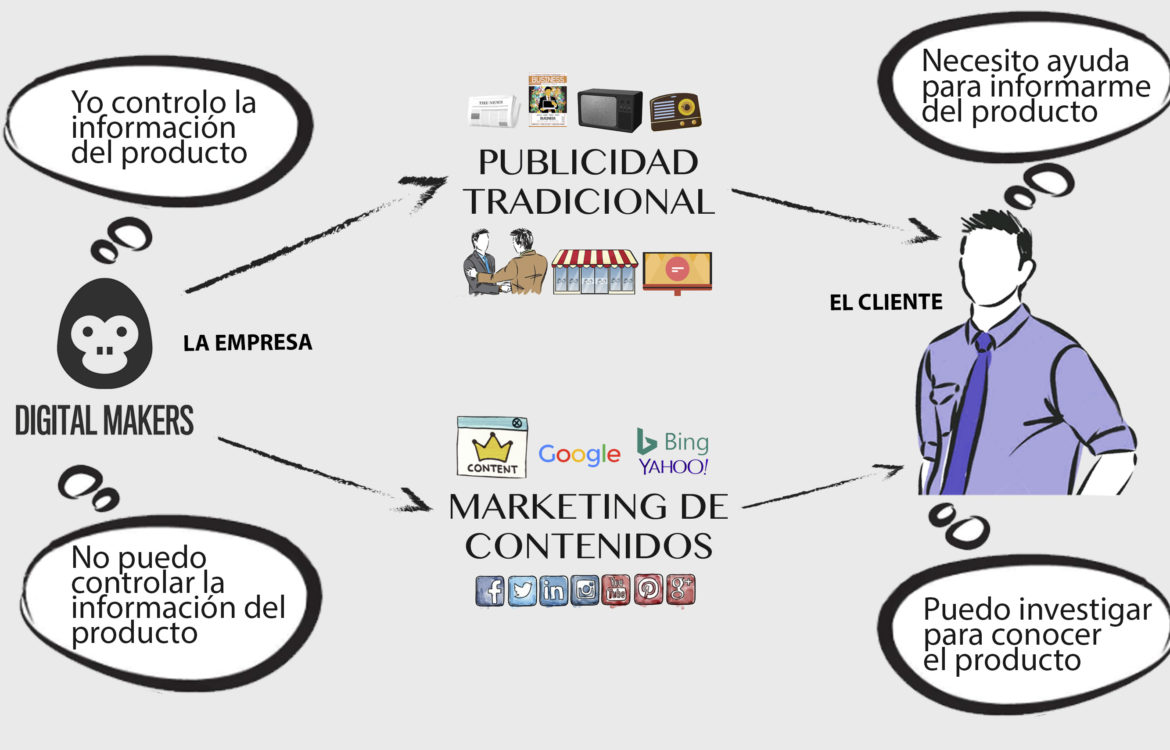The process of acquiring a client has changed significantly since a few years ago, as the purchasing process has also been transformed with the digital age.
Before there was Internet, the information was generally one-way. Let’s say you saw a new product on TV or they told you about it on the radio and, suddenly, it seemed interesting enough to go to the store to inform you about it. You were practically naked of information, with the few touches that you could have given the publicity, but without knowing exactly their specifications or their advantages. You arrived with the right information and depended on the sales assistant to clarify the doubts you could have regarding the product in question, hoping to be lucky enough to be a competent person and professional enough not to lie and give you the right information to be able to decide.

Only 20 years ago it was the companies that had the bulk of the information and, therefore, could distribute it as they preferred. To capture potential clients, they used offline media, such as television or print media, showing the advantages of their product and, obviously, without showing their failures. And the customer could only know the disadvantages of the product by word of mouth, talking to his acquaintances or, simply, buying the product himself and testing it.
When the internet was born, everything changed. Suddenly, there was a global platform where you could search for information, both the one that the company wanted to show and the one that did not, through the comments of other users. The company was no longer the only one that could transmit the information and make potential customers interested in their product, but the client could actively search for the product that interested them in order to know it in all its dimensions, both its advantages and its drawbacks.
And, suddenly, the information stopped being controlled and a response from the company was required. When the Internet did not exist yet, the companies were targeting new users and had no feedback on their part. They could assess whether their sales had gone up after a TV campaign, for example, or from consumer surveys, but they did not have much information about their potential customers until the sale had been made. Instead, suddenly, with online media the game has changed, the company can measure the results of their online campaigns in a more accurate and accurate way, knowing if they have had more success with men or women, if their potential customers are more or less young, if they buy better in store or in online mode … the information of the possible client is much more specific, so if you know him well it will be easier to also address him and get his attention.

The online media make it possible for users to actively seek information, and the company has to make it easier for users to find it, either through organic means, that is, creating quality content that is related to the needs and searches of its potential customers, or through means of payment, equally betting on quality content but entering a payment mode to the browser or social networks to ensure the appearance of a search of interest for the company.
In any case, with the Internet age, information has become a vital asset, shared and requires company and client feedback, and the company has to establish dialogue with its customers if it wants to survive in the digital world.










